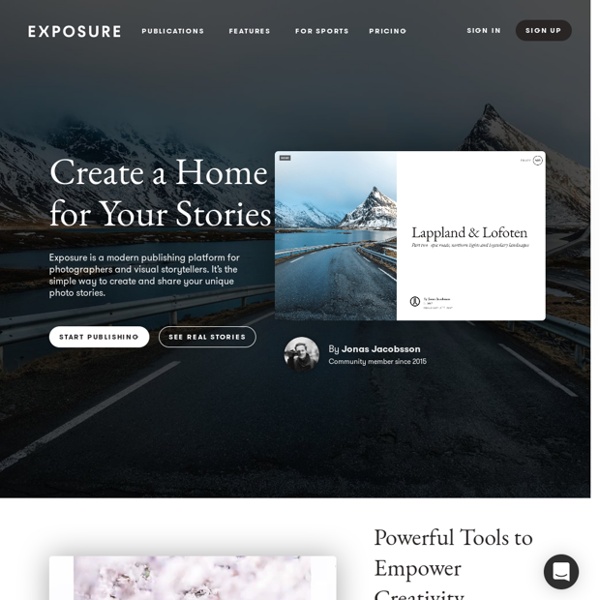Exposure

PowToon, free business presentation software animated video maker and PowerPoint alternative
lalaGIF
Storyful
Invitations, Collages, Slideshows and Scrapbooks – Smilebox
Comic Life Desktop
For Mac Comic Life 3.5.14 – Release HistoryUpdated January 17th, 2020 Requires macOS 10.10.3 or later64-bit processor 1 GHz+ Intel Mac 1024 MB RAM (2 GB rec.) 384 MB of video RAM 300 MB of available disk space Minimum 1024×768 display (Mac older than macOS 10.10.13? Download Comic Life 3.5.10 here.This version requires OS X 10.6.8+) Try Comic Life: 30 day free trial! Download or buy Comic Life 3, the app with everything you need to make a stunning comic from your own images. Try it for 30 days, on us, and then buy it from our plasq store and register the trial or grab it from the Mac App Store. And don’t forget our amazing educational pricing!
5 User-Friendly Tools for Building Your Online Portfolio
Heather R. Huhman is the founder and president of Come Recommended, a content marketing and digital PR consultancy for organizations with products that target job seekers and/or employers. You can connect with Heather and Come Recommended on Twitter and Facebook. In today’s digital world, your job search has to be as much online as it is on paper. Social media platforms such as LinkedIn, Twitter and Facebook can help you establish your personal employment brand and connect with potential employers — in fact, almost 90% of employers are using social media to recruit potential employees [PDF]. What better way to have all of your online and offline job search tools in one place than in a portfolio? An online portfolio allows you to compile what makes you employable — it should include things like your resume, cover letter, references, certifications, transcripts and any examples of your work (including writing samples, press clips, artwork or lesson plans). 1. 2. 3. Cost: Free 4. 5.
Aviary
tellows – Ricerca Inversa sull'App Store
Related:
Photography
•
Visual Storytelling
•
Snowfalling
•
visual storytelling
•
FLAT DESIGN WEBSITES
•
accueil
•
b2rhom
Related:



